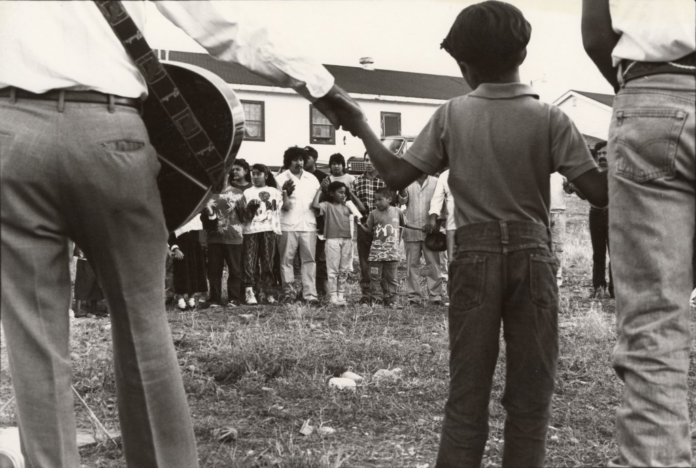Boulder County’s Las Barracas, or “the barracks,” has been named to the first national list of Endangered Latinx Landmarks by the Latinos in Heritage Conservation.
Located on the Boulder County Golden Farm open space property near Longmont, the barracks housed migrant workers and their families during the second half of the 20th century. It’s one of the last surviving examples of agricultural labor housing in the county and reflects the contributions of Latino farmworkers, whose stories have historically been excluded from preservation narratives.
”Preserving the site isn’t just about nostalgia,” said Elisabeth Ríos-Brooks, cultural resource program coordinator for Boulder County Parks and Open Space. “It’s about justice and truth telling. It’s the story of people who helped build the region’s agricultural legacy.”
The endangered landmarks list recognizes 13 sites in 10 states that represent migration, resilience, cultural expression and survival. Those sites face threats that include demolition, neglect, displacement and climate change. Along with the barracks, the list includes a street market in Arizona, a cemetery in Texas, a youth center in California and a mural in Washington, D.C.
Fewer than 1% of properties on the National Register of Historic Places reflect Latino history, according to Latinos in Heritage Conservation.
In Boulder County, there were once three barracks buildings, all of which were originally World War II-era military barracks. The best guess of county staff members is those buildings were moved to Boulder County from either the Buckley or the Lowry air force bases. At the time, military bases were selling barracks for $1 to farmers.
Along with the county’s Latino history, the barracks are part of the area’s Japanese American history.
Frank Tanaka started farming in Colorado after he immigrated from Japan in 1907. After his death in 1953, four of his sons built the family farm into one of the nation’s largest family-owned vegetable farms with 5,000-plus acres, divided roughly between family-owned and leased land in Boulder and Weld counties.
Tanaka Farms moved the barracks to the current site as farmworker housing, with the barracks likely used from the 1960s through the 1980s. In 1988, the farm was sued by the federal government over migrant labor and overcrowded housing conditions. In 1989, the family filed bankruptcy and liquidated assets. The family stopped farming in Boulder County in 2016.
The barracks were refurbished in the early 1990s. Boulder County purchased the 98-acre property in 2003 and deconstructed two of the barracks buildings because of their poor condition, leaving the third, easternmost building intact.
Ríos-Brooks said the county wants to work with the community in deciding how best to preserve the barracks building, which has been a magnet for graffiti and is currently closed to the public. Possibilities include an interpretive sign to share the building’s history, recording oral histories or creating educational programming.
The county wants to hear stories from the Latino and Japanese American communities, she said, including both the hardships and the joys of living there.
“We can’t tell the story without the community,” she said. “The story is complicated, and it’s messy. The county wants to get it right, to the extent we can. That means going out and listening. We want to show all the stories that represent the deep diversity of our county.”




